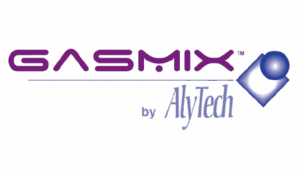
How does GasMix work?
GasMix is using mass flow controlers to manage flows. According to the ISO 6145-7 method.
What type of applications is GasMix suitable for?
GasMix is mainly used to calibrate, verify, ajust, analyzers based on comparative methods. But, not only: Any work involving gases can be interested in GasMix
Can the instrument be customized?
Yes, AIOLOS III, Nephos and G-rack can be customized linked to your finale application. Adding valves, external signals, communication is possible under request.
Why choose GasMix?
Because of it's powerful, dedicated, inhouse developed, software allowing full traceability, easy use, automatisation and uncertainty calculation. Multiple options can be added to feat pefectly with your application.
What is the principle of operation of AURA II? Why is it used?
AURAII is a vaporizer of LPG. An internal heated pressure regulator allow to vaporize all the LPG sample to avoid any discrimination. All the lines are then heated to maintain the sample in gas phase.
What is the difference between GasMix and LiqMix?
Liqmix allows to generate gas mixture from liquid phase. It's for compounds not available in standard gas cylinder. GasMix is a gas/gas dilutor and/or blender.
Why do we use the K-factor?
The response of mass flow controllers depends on the gas being used. Each MFC must therefore be calibrated for the specific gas of interest. The K-Factor allows the adjustment of an MFC regardless of the gas type.
Thanks to this, any type of gas can be used accurately.
What is the uncertainty of GasMix ?
The uncertainty values on the gas concentrations goe from less than 0.1% to approximately 2%. No fixed estimated uncertainty! The real value comes from a unique evaluation of the gas flow uncertainty on each channel versus the flow value.
Can GasMix generate mixtures at very low concentrations (ppb level)?
Yes, GasMix can generate mixtures at very low concentrations, down to the ppb level or even lower.
This capability mainly depends on the initial concentration of the gas cylinder to be diluted and on the GasMix configuration.
In standard configuration, GasMix can dilute gases by up to a factor of 10⁴, and up to 10⁸ when using the cascade mode.
What are the concentration limitations?
There are no inherent concentration limitations.
The system simply needs to be configured according to the application: generating very low concentrations from a highly concentrated gas requires the cascade option, while low dilution ratios can be achieved by selecting the appropriate flow controllers.
How to adjust the flow rates in GasMix?
The flow rates are automatically managed by the software.
The operator simply enters the initial concentration, the desired final concentrations, and if required the total flow rate. The software then automatically calculates the individual flow rates needed to generate the gas mixtures.
Do we need to maintain GasMix?
No specific maintenance is required.
A calibration check every two years is recommended to verify and adjust the mass flow controllers.
Additional checks can be carried out more frequently using external flow meters.
What is the validation period for GasMix?
The ISO 6145-7 recommends a verification, and recalibration when needed, every 2 years. However, internal quality procedures may call for different time pace.
What quality standards do the instruments comply with?
GasMix complies with the ISO 6145-7 method; complies, but also goes beyond the performance requests. Concentration uncertainty values versus concentration values is one example
Does Alytech provide complete installation and commissioning of the GasMix system?
Yes! Onsite or remotely
Is the GasMix system delivered as a turnkey solution?
Out of the box, GasMix is ready to be fired up, and used. A comprehensive video and short, but applicated manual, allows a quick start. Application chemists are on duty at AlyTech every day to support on line users.
What does the total installation service include?
Installation & start-up package includes the training on the software, hardware installation, and first methods development and adjustment.
Can Alytech assist with on-site installation and training?
Yes. One day is normally sufficient
What is the principle of the Nephos vapour generation system?
Nephos allows a continuous flow of an amount of liquid in gas flow. The full amount of the liquid is vaporized in the gas phase at a controlled temperature.
How does the Nephos system generate and control vapour concentration?
Nephos uses a Coriolis flow meter for the liquid, combined with a control valve mounted on a vaporisation chamber. The liquid and gas flow rates are automatically calculated and regulated via the software to achieve the desired concentration.
What is the difference between Nephos and LiqMix?
Nephos is a LiqMix! This is the new version of the LiqMix. While LiqMix was developed, on demand, step by step, Nephos is a true breakthrough, thanks to a complete redesign.
Can Nephos generate humidity or organic vapours (VOCs)?
Yes, both organic and water.
What are the typical applications of Nephos?
Nephos is the perfect companion for who needs to dynamically create some calibration gases, or any synthetic gases, which are not available in cylinders, since unstable, too heavy, reactive, etc. In many cases, Nephos is the UNIQUE solution to genarate the needed gas.
Which gases are compatible with GasMix™?
Mostly all gases can be used. Internal lines are 316 stainless steel inert treated, seals are in Kalrez(c). For liquids, oganics, water, alcohols...It is not possible to generate mixtures of saline solutions.
How should the system be stored when not in use?
Purge the lines with an inert gas, place plugs on all gas inlets and outlets.
What are the required inlet pressure levels?
GasMix can be used from 2bar(g) up to 8bar(g) (general use 3bar(g))
Can mixtures with very low concentrations (ppb) be generated from a pure bottle?
Yes, this is possible using the cascade dilution module, which allows concentrations in the ppb range to be obtained. The maximum dilution ratio is of 10^8 (from 100% to approx. 10ppb depending on the balance gas).
